Introduction to Email Marketing Campaign

What is an Email Campaign?
An email campaign is a sequence of marketing efforts conducted through email, aimed at engaging, informing, or persuading your audience to take action. It's a direct line to your potential and existing customers, right in their inbox. This approach is critical for several reasons:
Reach: With billions actively using email, the potential audience is vast.
ROI: Email marketing often boasts a high return on investment, due to its low cost and high efficiency.
Engagement: Personalized email content can significantly increase engagement rates.
Role of Email Campaigns in Your Email Marketing Strategy
Boost Brand Awareness: Regularly landing in inboxes keeps your brand visible and relevant.
Generate Leads: By offering value in your emails, you encourage subscribers to share their information.
Drive Sales: Promotional emails can directly increase sales with compelling offers.
Email campaigns are essential for building and maintaining relationships with your audience. By understanding the what, why, and how of email campaigns, you can more effectively integrate them to build overall effective email marketing strategy. Start with clear objectives, personalize your approach, and always analyze the outcomes to refine your tactics.
How to Build a Successful Email Marketing Campaign
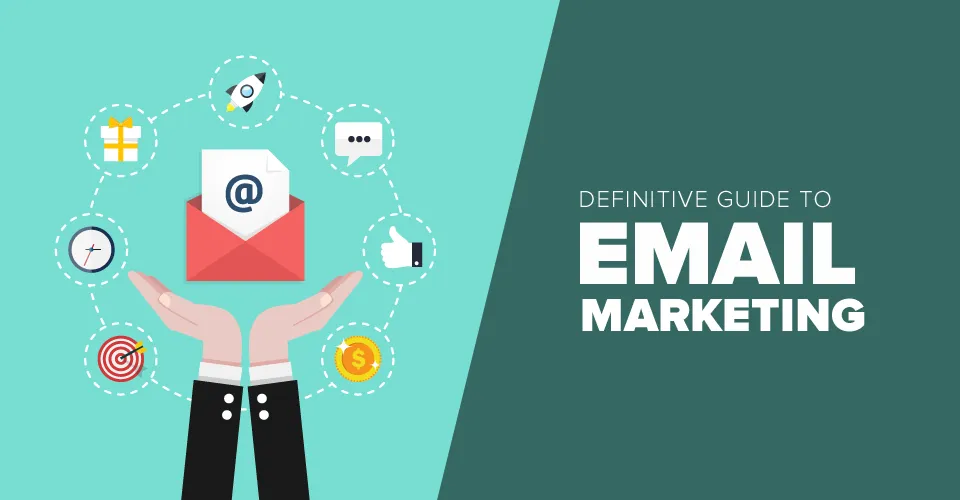
Creating a successful email marketing campaign hinges on incorporating strategic elements that ensure your message resonates with your target audience and achieves your desired marketing goals. Here's a comprehensive approach, integrating the key terms you've specified, to build an effective email marketing campaign:
Building a Strategic Foundation for Your Email Marketing Campaign
Developing Your Email Marketing Strategy
Start with a robust email marketing strategy, considering the goals of your email campaigns marketing efforts. This involves understanding your target audience, determining the type of content that will engage them, and deciding on the actions you want them to take. Utilizing email marketing tools and platforms can automate and streamline the process, making your strategy more effective.
Creating Your Marketing Campaign
Each email campaign should be a part of a broader marketing strategy that aligns with your overall digital marketing objectives. This includes leveraging insights from email marketing campaign examples and utilizing email marketing services to enhance your campaign's reach and impact.
Designing Engaging Content for Email Campaigns
Compelling Subject Lines
The subject line is your first impression. Crafting an engaging email subject line is crucial to ensure your emails are opened. Successful email marketing campaigns often use personalization, urgency, and curiosity to entice the reader.
Email Content Personalization
Personalize your marketing emails beyond just using the recipient's name. Segment your email list and tailor the content to meet the specific interests and needs of different segments. Email personalization can significantly boost your click-through rates and overall engagement.
Choosing the Right Email Service Provider
Your choice of email service providers can have a significant impact on the success of your email marketing efforts. Look for platforms that offer comprehensive email marketing tools, including templates, automation, and analytics to measure email marketing performance.
Enhancing Engagement and Conversion
Utilizing Email Marketing Templates and Tools
High-quality email marketing templates can help create visually appealing and engaging emails. Combined with powerful email marketing software, these templates can drive higher engagement and conversions.
Measuring Success Through Analytics
Use email marketing platforms to track the success of your campaigns. Key metrics to monitor include open rates, click-through rates, and conversion rates. This data will help you refine your email marketing strategy for better performance.
Integrating Marketing Channels
A successful email marketing campaign doesn't operate in isolation. Integrate it with other marketing channels, such as social media marketing and digital marketing, to create a cohesive and multi-channel marketing strategy. This ensures a consistent message across all platforms, reaching your audience wherever they are.
Maintaining Compliance and Building Relationships
Adhering to Email Marketing Compliance
Ensure your email marketing campaigns comply with regulations like the CAN-SPAM Act. This includes providing clear unsubscribe options and maintaining honest subject lines and content.
Building Customer Relationships
Use welcome emails and re-engagement emails to build and maintain customer loyalty. These emails are opportunities to connect with your audience, offer value, and encourage ongoing engagement.
Promotional Email Campaigns and More
Beyond regular newsletters, consider various types of emails, such as promotional, transactional, and testimonial request emails, to keep your audience engaged and drive specific actions.
By thoughtfully incorporating these elements into your email marketing campaign, you can create a powerful marketing tool that reaches your audience, resonates with them, encourages engagement, and drives conversions. Remember, the key to email marketing success lies in consistent refinement based on performance data, staying up-to-date with email marketing trends, and always prioritizing the needs and interests of your target audience.
Types of Marketing Emails to Improve Your Marketing Strategy
Understanding the diverse types of marketing emails and their strategic uses is paramount to improve your email marketing strategy. Each type plays a unique role in engaging your audience, driving sales, and fostering loyalty. Let’s understand the different types of marketing emails
Welcome Email: Greeting New Subscribers
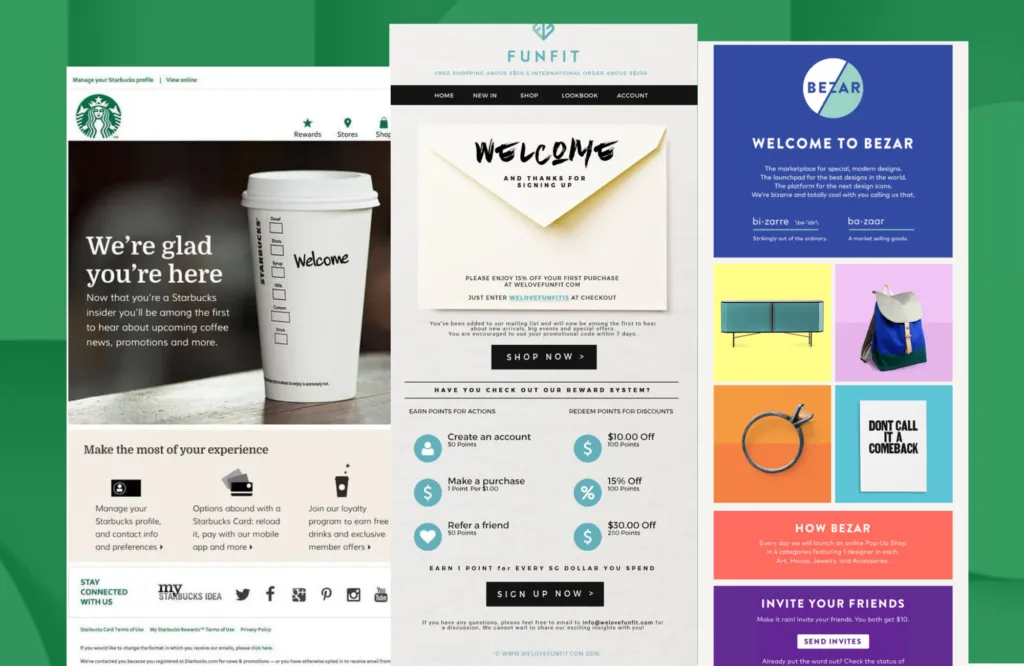
A welcome email is your first handshake with a new subscriber, setting the tone for your relationship. It’s an opportunity to introduce your brand, highlight your value proposition, and guide them on what to expect from your emails.
Effective welcome emails not only greet new subscribers but also encourage immediate engagement through special offers or valuable content, laying the foundation for customer loyalty.
Promotional Email Campaigns: Driving Sales and Traffic

Promotional email campaigns are direct marketing efforts designed to drive sales and increase website traffic. They often feature special deals, limited-time offers, or exclusive previews of new products.
The success of these campaigns hinges on creating urgency and showcasing the benefits of immediate action. Segmentation and personalization can significantly enhance the effectiveness of promotional emails, ensuring that the right deals reach the right customers.
Transactional Emails

Transactional emails are automated messages triggered by specific actions, such as purchases, account updates, or password resets. Despite their functional nature, transactional emails are a crucial touchpoint in the customer journey.
They provide an opportunity to reinforce your brand identity, offer additional value through recommendations, and improve customer experience by ensuring relevant and timely communication.
Newsletter and Content Promotion: Create Relevant Content

Newsletters offer a regular engagement with your subscribers. They should deliver relevant content that entertains, educates, or informs your audience, establishing your brand as a valuable resource.
Content promotion within newsletters can help drive traffic to your blog, social media, or other digital platforms, enhancing your overall digital marketing strategy.
Re-engagement and Loyalty Programs: Keeping Subscribers Active
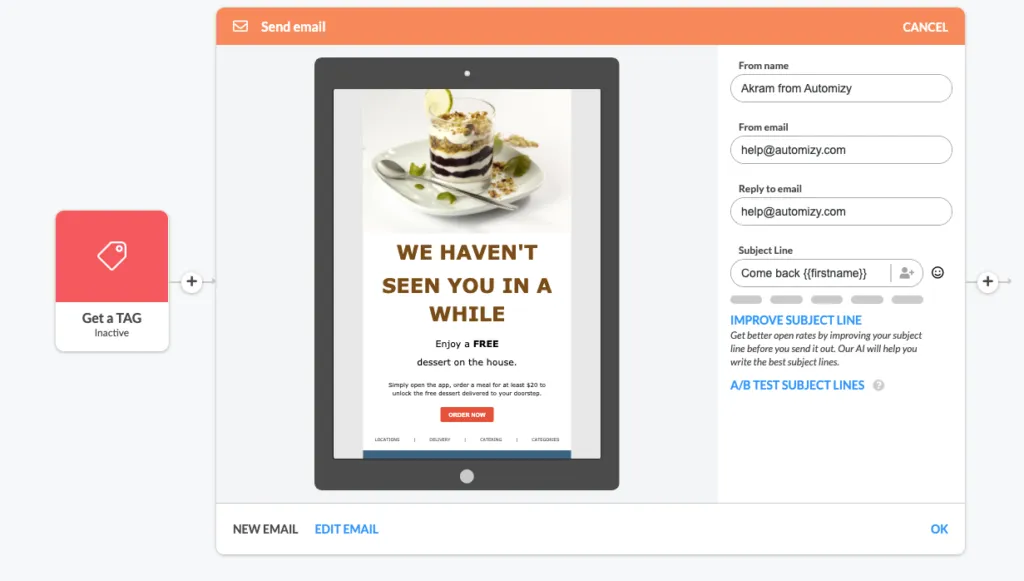
Re-engagement emails target subscribers who have become less active over time, aiming to reignite their interest in your brand. These may include special offers, updates on what they’ve missed, or simple messages asking for feedback.
Loyalty programs, on the other hand, reward active subscribers, encouraging continued engagement and purchases. Both strategies are vital for maintaining a healthy and engaged email list.
Newsletter Emails
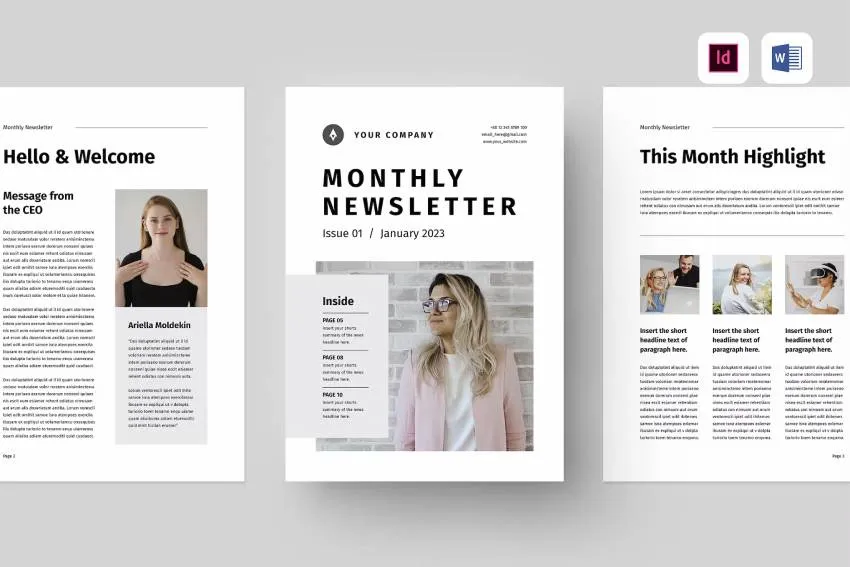
Newsletters are the backbone of regular communication with your audience. They're versatile and can include a mix of content like articles, product updates, and user-generated content. The key to successful newsletters is providing value that keeps your audience engaged over time. This could mean industry insights, tips, company news, or early access to sales, all curated to maintain interest and foster brand loyalty.
Abandoned Cart Emails
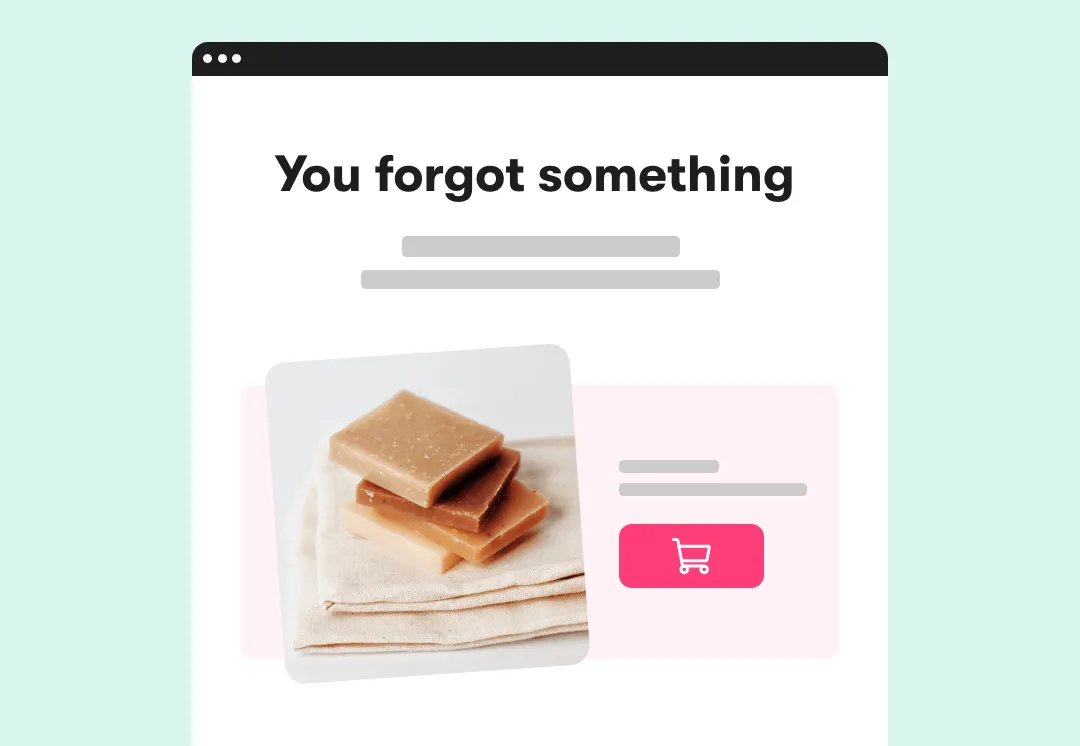
These are sent to customers who added items to their online shopping cart but left without completing the purchase. A well-timed abandoned cart email can remind the customer of their initial interest and encourage them to complete the transaction. Offering additional incentives, such as free shipping or a discount, can increase the effectiveness of these emails.
Each type of email serves a unique purpose within an email marketing campaign, and their strategic use can significantly improve engagement, conversion, and customer retention. By understanding the role and potential of each email type, marketers can craft campaigns that not only reach but resonate with their audience, driving both immediate and long-term results.
Incorporating these types of emails into your email marketing campaign can significantly improve your marketing strategy, driving engagement, sales, and loyalty. By understanding the role each email type plays within the broader context of your marketing efforts, you can create more targeted, effective campaigns that resonate with your audience and drive measurable results.
20 Best Practices to Increase Your Marketing Efforts
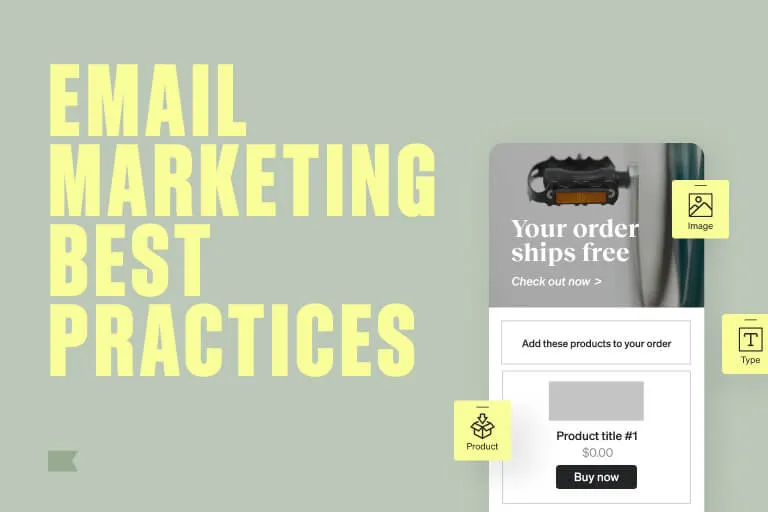
Elevating your email marketing strategy involves a blend of creativity, analytics, and personalized communication. To drive significant results, understanding and implementing these best practices are crucial. Let’s delve into each to enhance your marketing efforts.
1.Audience Segmentation: A Key to Better Engagement
Audience segmentation divides your email list based on demographics, behaviors, or purchase history, allowing for more targeted and relevant messaging. The more relevant the email, the higher the engagement. Segmented email campaigns have been shown to increase open rates and click-through rates, leading to more effective email marketing campaigns and ultimately, higher ROI.
2.Choosing a Good Email Service Provider and Email Marketing Tool
The success of your email marketing campaign largely depends on the email service provider (ESP) and the tools you use for targeted campaign. A good ESP offers deliverability, analytics, automation, and integration options.
Deliverability: Ensure your ESP has a high deliverability rate to get your emails into the inbox, not the spam folder.
Features: Look for automation, segmentation, and personalization features to create targeted and effective campaigns.
Analytics: Comprehensive analytics help measure the success of your campaigns, guiding future strategies.
3.Consistent A/B Testing:
Regularly test different aspects of your emails, including subject lines, content, and send times.
Utilize A/B testing to determine the most effective variations.
Continuously refine your approach based on testing outcomes.
4.Use of Email Marketing Templates:
Employ templates for brand consistency across all emails.
Ensure templates are customizable for personalization and segmentation.
Maintain a balance between consistency and flexibility in template use.
5.Mobile Optimization:
Design emails to be responsive on mobile devices.
Keep subject lines short, content concise, and CTA buttons large for mobile friendliness.
Test emails on various devices to ensure optimal display and functionality.
6.Advanced Personalization:
Personalize emails beyond using the recipient's name, incorporating behavior-based and interest-based content.
Use data analytics for deeper personalization, such as product recommendations and tailored discounts.
Continuously update your personalization tactics based on user interaction and feedback.
7.Email List Health:
Regularly cleanse your email list to remove inactive subscribers and invalid addresses.
Implement re-engagement campaigns for inactives before removal.
Prioritize maintaining a high-quality email list for better engagement and deliverability.
8.User Experience (UX) Focus:
Ensure emails are easy to navigate with a clear call-to-action.
Use whitespace effectively and ensure emails are visually appealing.
Prioritize the subscriber's reading and interaction experience to drive actions.
9.Leverage Automation:
Automate emails based on subscriber actions, such as welcome emails or post-purchase follow-ups.
Set up drip campaigns for various purposes, from onboarding to lead nurturing.
Use automation to save time and ensure timely, relevant communication.
10.Content Variety:
Include a mix of content types in your emails, such as articles, videos, and infographics.
Cater to different preferences within your audience to keep emails engaging.
Update content strategies based on engagement metrics and feedback.
11.Feedback Loops:
Encourage and collect subscriber feedback through surveys and response prompts in emails.
Use feedback to adjust and improve email content, design, and segmentation.
Make feedback collection an ongoing part of your strategy to align with audience expectations.
12.Timing and Frequency Optimization:
Test and identify the optimal sending times and frequency for your emails.
Avoid over-sending to prevent subscriber fatigue.
Adjust frequency based on segment engagement and preferences.
13.Clear and Compelling CTAs:
Use strong, action-oriented language for your calls-to-action.
Make CTAs visually stand out in the email design.
Limit the number of CTAs to focus subscriber action.
14.Data-Driven Decision Making:
Base strategic decisions on analytics, from open rates to conversion metrics.
Regularly review performance data to identify trends and areas for improvement.
Use insights gained from data to tailor future campaigns.
15.Collaboration Across Channels:
Integrate email marketing efforts with other channels, such as social media and content marketing.
Use consistent messaging and branding across all platforms.
Leverage insights from one channel to inform strategies in another.
16.Privacy and Compliance:
Adhere to email marketing laws and regulations, including GDPR and CAN-SPAM.
Ensure subscribers have opted in and can easily unsubscribe.
Respect subscriber privacy and data security in all campaigns.
17.Brand Storytelling:
Incorporate storytelling elements into your emails to connect on an emotional level.
Use brand stories to convey values and build community.
Align storytelling with brand identity and audience values.
18.Innovative Subject Lines:
Craft subject lines that grab attention and provoke curiosity.
Avoid clickbait tactics; ensure relevance to the email content.
Test different subject line styles to find what works best for your audience.
19.Subscriber-Driven Content:
Involve subscribers in content creation, through user-generated content or content requests.
Make emails feel more personalized and community-oriented.
Use subscriber contributions to build a sense of ownership and loyalty.
20.Ongoing Education and Adaptation:
Stay informed about email marketing trends and technologies.
Continuously educate yourself and your team on best practices and innovations.
Be willing to adapt and evolve your strategies in response to industry changes and feedback.
Implementing Best Practices
Beyond choosing an ESP, integrating best practices like consistent testing, utilizing email marketing templates for brand consistency, and optimizing for mobile devices are essential steps. These practices ensure your email campaigns are accessible, engaging, and ultimately successful in driving your marketing goals forward.
Incorporating these strategies into your email marketing campaign can help you run successful email campaigns. From understanding your audience to build relationships through segmentation to selecting an email service provider that meets your needs, each step is crucial in developing a robust email marketing strategy that drives engagement, sales, and customer loyalty.
Leveraging Advanced Marketing Email Strategies
Refining Your Email Marketing Strategy for Higher Click-Through Rate
Improving your click-through rate (CTR) is about sending interesting and engaging emails. Here’s how you refine your strategy:
Personalize Your Messages
Beyond "Hello [Name]," dive into behavioral targeting. Use past purchases, website activity, and email engagement to tailor your message and craft good email subject lines.
Segment Your Audience
Divide your email subscribers into smaller segments based on shared characteristics or behaviors. This allows for more targeted and relevant content, significantly boosting CTR.
Optimize Your Subject Lines
Test different subject lines, focusing on urgency, curiosity, or offering value. Remember, the subject line is your first impression.
Key Metrics for Measuring Email Marketing Success
Measuring the impact of your email marketing campaign is crucial. Key metrics include:
Open Rate
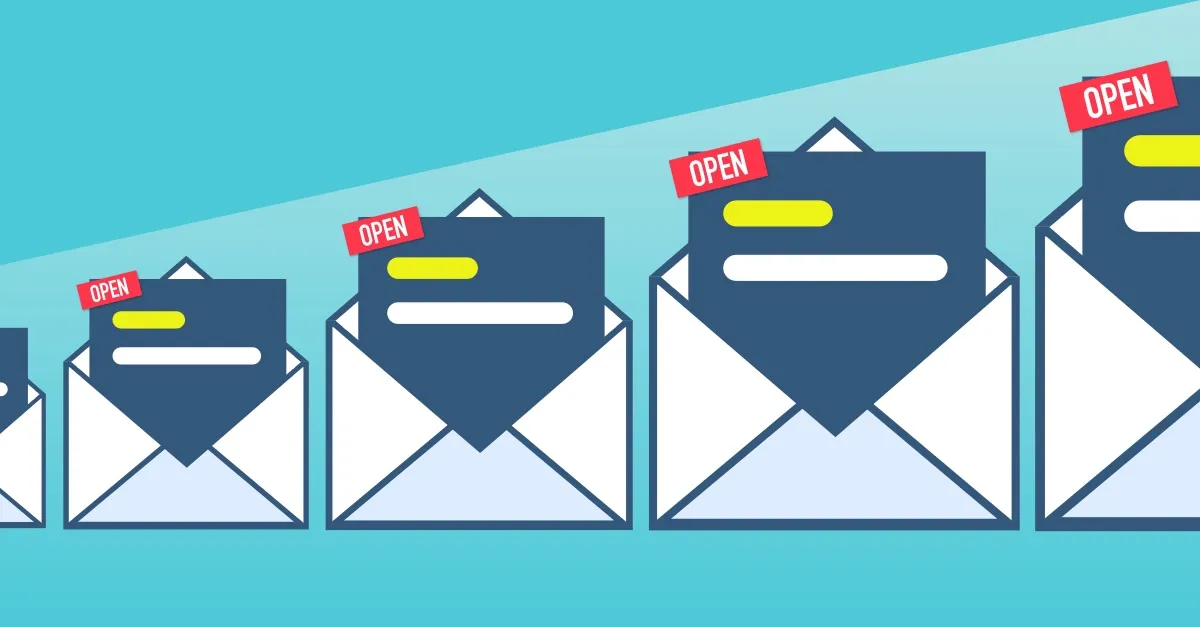
Measures how many people open your email. It reflects the effectiveness of your subject line.
Click-Through Rate (CTR):
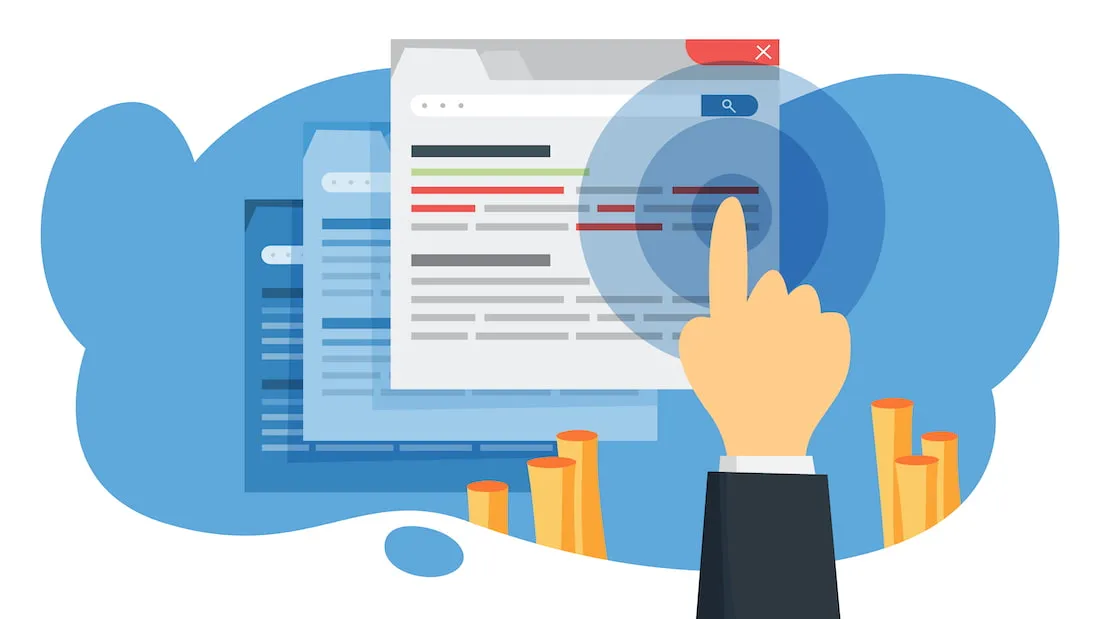
The percentage of email recipients who clicked on one or more links contained in an email. This metric is vital for understanding how well your email prompts action.
Conversion Rate

Tracks how many recipients took the desired action after clicking on the link in your email. It could be making a purchase, signing up for a webinar, or any predefined goal.
Bounce Rate
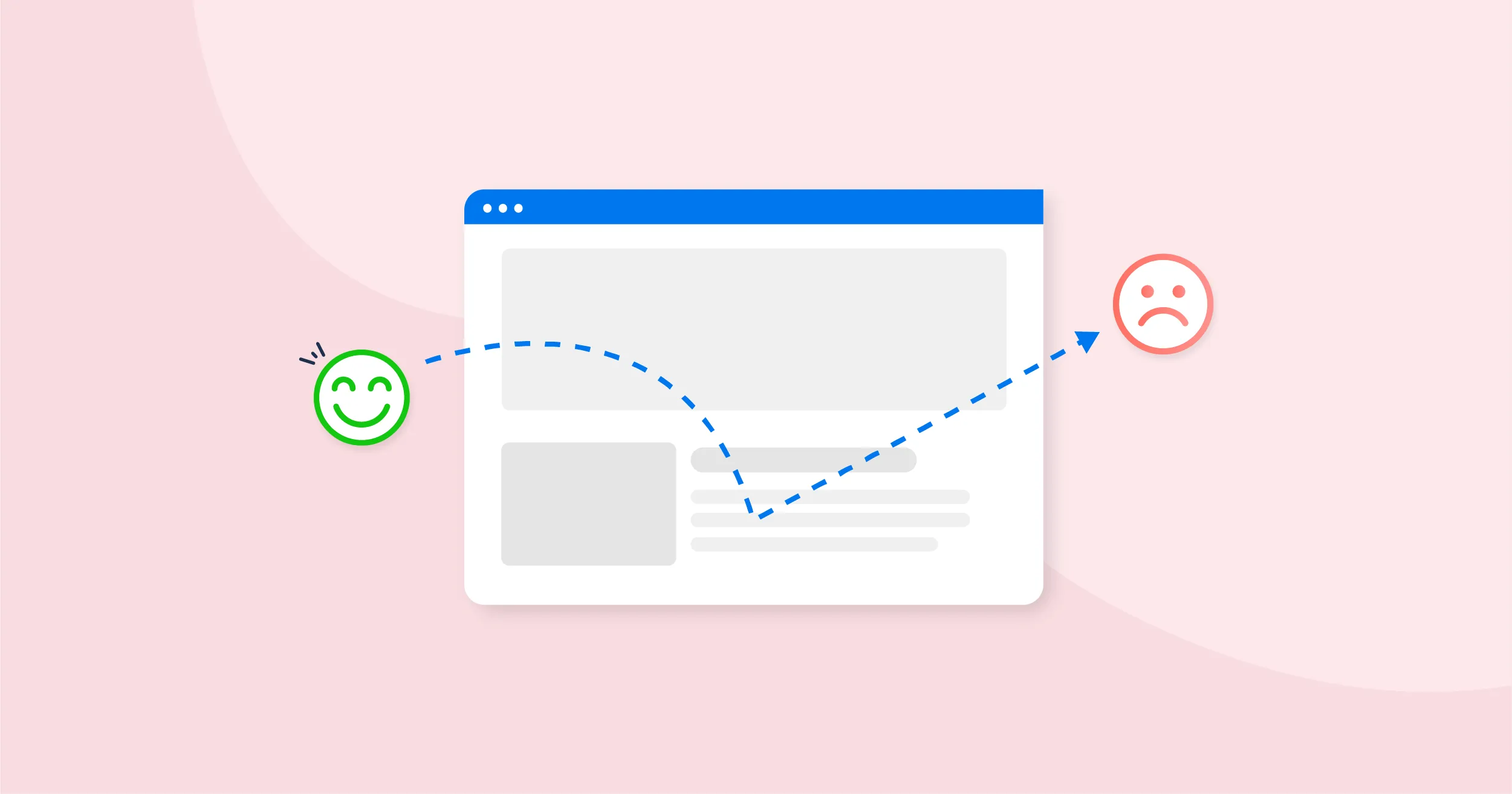
The rate at which your emails are not delivered. Keeping this low is crucial for email deliverability and overall campaign health.
Choose the Right Email Marketing Software
Selecting the appropriate email marketing software or tool for email automation is non-negotiable for running effective campaigns. Here’s what to look for:
Ease of Use
It should be straightforward to create campaigns, segment lists, and analyze results.
Features
Look for software that offers automation, personalization, A/B testing, and advanced segmentation.
Integration
The tool should seamlessly integrate with your other marketing platforms and CRM system.
Analytics and Reporting
Detailed reports can help refine your strategy, improving email marketing performance over time.
Incorporating advanced strategies and measuring their effectiveness can significantly improve your email marketing efforts. Remember, the goal is not just to increase metrics like the click-through rate but to build lasting relationships with your audience, send targeted emails, nurture leads into loyal customers. This approach, combined with the right tools and a deep understanding of your audience, can elevate your email marketing campaign from good to great.
By implementing these strategies and continually refining your approach based on performance data, you're not just sending emails; you're creating value and driving measurable success in your digital marketing efforts.
What are Potential Opportunities in Email Marketing ?
As we navigate through the digital age, email marketing remains a pivotal component of business strategy, constantly evolving to meet the demands of technology and consumer behavior. Let's explore the future of email marketing, focusing on upcoming trends, integration with social media, and selecting the right platform.
Upcoming Trends
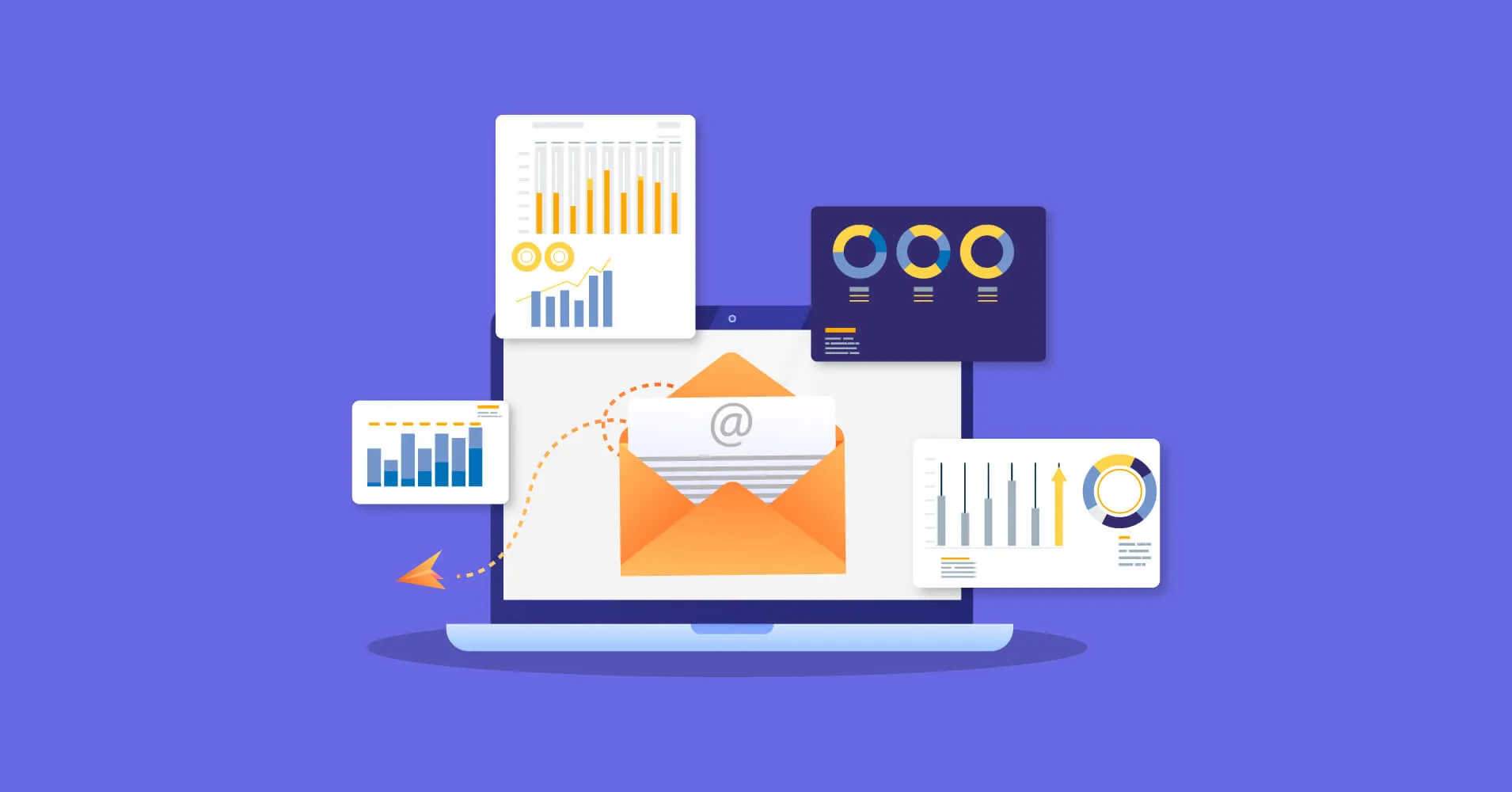
Personalization and Automation
Beyond just addressing recipients by name, future email campaigns will leverage data analytics for hyper-personalization, offering content tailored to individual preferences and behaviors. Automation tools will become more sophisticated, enabling marketers to send emails triggered by specific actions in real-time.
AI and Machine Learning
These technologies will refine email marketing strategies, predicting optimal sending times, and personalizing email content for each subscriber, thus significantly improving engagement rates.
Interactivity
Emails will transform into interactive platforms, offering experiences like shopping and booking directly within the email, enhancing user engagement without needing to visit an external webpage.
Privacy and Compliance
With increasing concerns about privacy, future email marketing will emphasize transparency and compliance, giving subscribers more control over their data.
Integrate Email Marketing with Social Media Marketing
The synergy between email marketing and social media marketing will deepen. Here’s how:
Cross-Promotion
Use social media to grow your email list and vice versa, ensuring consistent messaging across platforms.
User-Generated Content
Incorporate content from social media into your emails to build community and trust.
Retargeting
Utilize social media retargeting ads to capture the attention of users who have interacted with your email campaigns, reinforcing your message across multiple channels.
Integrating these platforms amplifies your marketing efforts, leveraging the strengths of each to create a cohesive and comprehensive marketing strategy.
Choosing the Right Email Marketing Platform
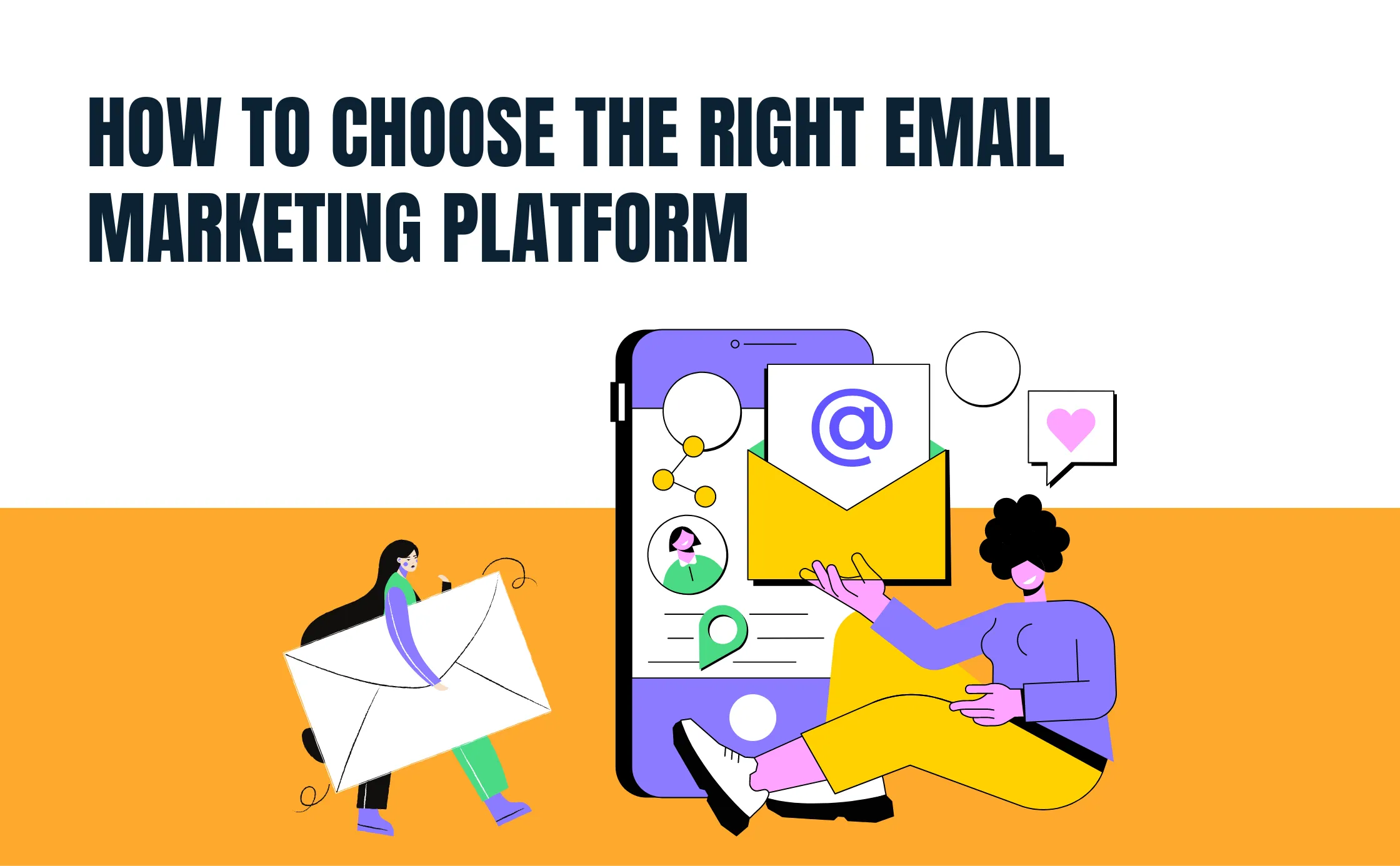
Selecting an email marketing platform that aligns with your future goals is crucial. Consider these factors:
Scalability
Choose a platform that can grow with your business, handling an increasing number of subscribers and more complex campaigns without a hitch.
Features
Look for advanced features such as AI-driven insights, automation capabilities, personalization, and integration options with other marketing tools and platforms.
Usability
The platform should be user-friendly, allowing you to create, execute, and analyze campaigns without needing extensive technical knowledge.
Support and Community
Adequate customer support and an active community can provide valuable resources and insights.By focusing on these aspects, you can ensure that your email marketing strategy remains robust and adaptable to future trends and technologies.
Driven by advances in technology, integration with social media, and a deeper understanding of consumer behavior email marketing has a lot of potential to explore further. By staying informed about these trends and strategically choosing the right tools and platforms, marketers can continue to harness the power of email marketing to connect with their audience in meaningful ways.
Conclusion: Wrapping Up Your Email Marketing Journey
Recap: Key Insights on Elevating Your Email Marketing
Tailored Content Wins
Personalization and audience segmentation aren't just buzzwords; they're the backbone of any campaign that aims to resonate on a personal level. Tailoring your message to address the specific needs, interests, and behaviors of different segments within your audience can significantly uplift open rates and engagements.
Data-Driven Decisions
Utilizing analytics to guide your email marketing strategy ensures that every decision is informed by actual user engagement and behavior. Metrics like open rates, click-through rates, and conversion rates are invaluable for refining your approach and maximizing the impact of your campaigns.
Email Marketing Templates
Streamlining Creation
Email marketing templates serve as a vital tool for maintaining consistency and efficiency. They not only ensure that your brand's identity remains cohesive across all communications but also significantly reduce the time and resources needed to launch each campaign.
Flexibility and Customization
The best templates are those that offer flexibility allowing for customization while keeping key branding elements intact. This ensures that while each campaign maintains a familiar feel, the content can be adjusted to fit the theme and objectives of each specific email.
Role of Email Campaigns in Your Digital Marketing Strategy
Integrated Approach
Email marketing should not stand in isolation. Integrating email campaigns with other components of your digital marketing strategy like social media marketing, content marketing, and SEO creates a unified front that amplifies your message and reaches audiences across multiple touchpoints.
Driving Engagement and Conversion
At its core, the role of an email marketing campaign within your digital strategy is to engage users in a meaningful way, guiding them through the customer journey from awareness to conversion.
By delivering targeted, relevant content, email marketing can significantly contribute to the overall success of your digital marketing efforts.
In conclusion, refining your email marketing strategy is a continuous process that evolves with your audience. Remember, the ultimate goal is to build and nurture relationships with your audience, turning subscribers into loyal advocates for your brand.





.jpg)

.jpg)
